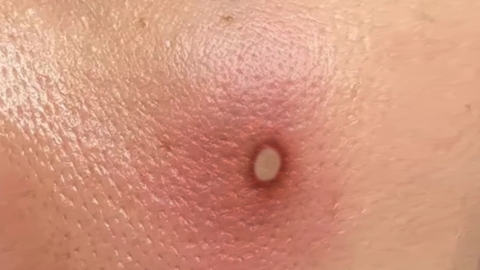How to treat a boil
Generally, boils may be caused by poor skin hygiene, decreased immunity, worsening folliculitis, infected sebaceous cysts, or infections associated with diabetes. It is recommended to seek timely medical attention, identify the cause, and improve the condition under a doctor's guidance through general treatments, medications, etc. Detailed analysis is as follows:

1. Poor Skin Hygiene: Accumulation of dirt and oils on the skin surface can block hair follicles, leading to bacterial growth and the development of boils, which present as localized redness and pain. Cleanse the skin daily with warm water, avoid squeezing manually, wear loose and breathable clothing, reduce skin friction, keep the skin dry, and prevent bacterial proliferation.
2. Decreased Immunity: Long-term sleep deprivation and excessive fatigue can lower immunity, weakening the skin's ability to resist bacterial infection and making boils more likely to develop, often recurring. Ensure sufficient sleep, avoid staying up late, maintain a balanced diet, consume more protein-rich foods such as eggs and lean meat, engage in moderate exercise like jogging, enhance immunity, and reduce the risk of infection.
3. Worsening Folliculitis: Bacterial infection of hair follicles causes inflammation, and failure to treat it promptly may lead to the spread of infection and the formation of boils, accompanied by pus at the follicular opening. Patients should apply topical medications such as mupirocin ointment, fusidic acid cream, or erythromycin ointment as directed by a physician, avoid scratching, and prevent worsening of the infection.
4. Infected Sebaceous Cyst: Blockage of sebaceous gland ducts leads to cyst formation, which can become secondarily infected by bacteria and cause boils, presenting with obvious local redness and swelling, along with a fluctuant sensation. During the early stage of infection, follow medical advice to use medications such as cefuroxime axetil tablets, amoxicillin capsules, or clindamycin capsules to control the infection. After the inflammation subsides, perform surgical excision of the sebaceous cyst completely to prevent recurrence.
5. Diabetes with Infection: Patients with poorly controlled blood sugar levels have high sugar content in skin tissues, making them prone to bacterial infections such as boils, which also heal slowly. Patients should control blood glucose levels by using insulin injection, glimepiride tablets, or metformin hydrochloride tablets as directed by a physician, while applying topical anti-infective ointments to maintain stable blood sugar levels and promote healing.
In daily life, maintain skin cleanliness and promptly dry off after sweating to avoid bacterial growth in moist environments. Adopt a light diet, reduce intake of spicy and irritating foods, eat more vegetables and fruits, supplement with vitamins, aid skin repair, and reduce the likelihood of developing boils.




